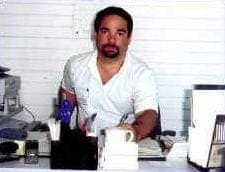
Curated with aloha by
Ted Mooney, P.E. RET

The authoritative public forum
for Metal Finishing 1989-2025

-----
Decreasing fluoboric acid concentration in tin fluoborate bath
Q. We are using a tin fluoborate bath. For some time now, the fluoboric acid concentration has been above the target, but the tin concentration below the target. However, by adding stannous fluoborate, we increase not only the tin concentration, but the fluoboric acid concentration. Is there any way to lower the fluoboric acid concentration without affecting anything else?
Randall Verhoef- Goleta, California
A. This happens occasionally when the anodes fail to keep up with the depletion rate. This can be caused by improper anode/cathode ratio, dirty anode bags or poor anode connection to name a few. Switching to star anodes helped us overcome some of the depletion we were seeing.

Jim Conner
Anoplex Software
Mabank, Texas USA

A. I don't see how the acid concentration can go up by adding stannous fluoborate. How are you analyzing for each?

Tom Pullizzi
Falls Township, Pennsylvania
Q. We determine tin and fluoboric acid concentration via titration. Tin: add conc. HCl and titrate with iodine using Pt ring electrode. Fluoboric acid: titrate with NaOH until turbidity.
Stannous fluoborate is added via a 50% wt solution. We have titrated this make-up solution for fluoboric acid and get ~430 g/L fluoboric acid. Hence, adding stannous fluoborate always increases the fluoboric acid concentration.
Randall Verhoef- Goleta, California
A. There is some free acid in the SnBF4 to prevent the formation of stannic tin. So when you add back tin you will also add back some acid. Also check your anodes to make sure they are dissolving.

George Shahin
Atotech - Rock Hill, South Carolina
A. I pulled this from the internet, I believe you need to get, in addition to the additive you use now, some stannous fluoborate without the added acid. This way, you will have full control of your chemistry. Apparently, the chemical you are using has been formulated to add both tin and fluoboric acid.
STANNOUS FLUOBORATE PROPERTIES SPECIFICATION
Formula - Sn(BF4)2
Appearance - Clear colorless solution
Odour - Odourless
Molecular weight - 292.21
Specific gravity - @ 250 °C g/cc - 1.59
Assay - 49-51% - min.
Sn++ - 20.2% - min.
Free boric acid - 0.5% - max.
Free fluoboric acid - 1.0-3.0% - max.
Stannic tin - 1.0% - max.
CI - 0.005% - max.
SO4 - 0.005% - max.
Fe - 0.005% - max.
Cu - 0.005% - max.
Pb - 0.003% - max.
Ni - 0.005% - max.
Zn - 0.001% - max.

Tom Pullizzi
Falls Township, Pennsylvania
A. The following is SPECULATIVE advice (haven't tried it). If you can afford to take your bath off-line and treat and filter it, you should be able to get rid of the excess tetrafluoroboric acid by "titrating" it with an equivalent amount of KOH solution:
HBF4 + KOH => KBF4 + H2O
KBF4 is quite insoluble (4.4 g/l at RT, surely less than that in the presence of excess tetrafluoroborate) and will precipitate. You may want to give it some time (8-16 hours is a good guess), and then filter. As you go back up to operating temperature (I assume you work above R.T.), any residual precipitation should stop. A small amount of potassium ions will remain in solution; probably not a problem for most purposes.
Emanuel I. CooperI.B.M. - Yorktown Heights, New York
Q, A, or Comment on THIS thread -or- Start a NEW Thread